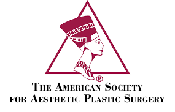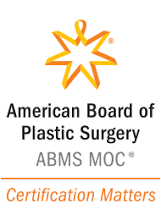How to Manage and Reverse Hair Loss from PCOS
For many women, yes; some PCOS-related hair loss can be improved and partly reversed with the right medical and procedural plan. The keys are treating the underlying hormone imbalance, protecting vulnerable follicles early, and—when appropriate—strategically restoring density.
As the tri-state region’s only ARTAS® robotic hair transplant provider and one of a handful of VERO™ hybrid (ARTAS + NeoGraft) programs nationwide, The Center for Hair Restoration pairs endocrine-informed medical management with best-in-class hair restoration to help women recover coverage and confidence—privately, safely, and with natural-looking results.
PCOS & Hair Loss: What’s Happening?
Polycystic ovary syndrome (PCOS) is a condition in which the body produces elevated levels of androgens, which are hormones like testosterone. While androgens are often associated with males, women also produce them in smaller amounts. The issue with PCOS is not just the increased hormone levels, but also how the body reacts to these hormones.
Here’s how it works:
- In PCOS, insulin resistance can raise both insulin and LH (luteinizing hormone) levels, which signal the ovaries to make even more androgens
- At the same time, your liver makes less of a protein called sex hormone–binding globulin (SHBG), so more testosterone stays “free,” or active
- That extra androgen activity affects tissues that are sensitive to hormones, including your hair follicles
Inside each follicle is a tiny structure called the dermal papilla, which acts like the follicle’s command center. When androgens repeatedly attach to receptors in these cells, they send out signals that slowly shrink the follicle and shorten its growth cycle. Over time, full-sized hairs are replaced by thinner, shorter hairs, a process known as miniaturization.
As such, you might notice:
- A wider part in your hair
- Thinning over the crown or top of the head
- Hair that feels finer and less dense
PCOS can also cause low-grade inflammation around the follicles, which can make the problem worse and, in some cases, lead to mild scarring if left untreated.
Why Early Treatment Makes A Big Difference
Hair loss due to PCOS typically begins with follicle shrinkage rather than destruction, meaning restoration is possible.
At The Center for Hair Restoration at Premier Plastic Surgery, we address the hormonal and metabolic factors that contribute to thinning hair. By managing excess androgens, improving insulin sensitivity, and stimulating follicle growth, we can promote the development of thicker, stronger hair.
In practical terms, “reversal” looks like:
- Reducing shedding and slowing progression through targeted medical therapy and nutrition-guided support
- Thickening existing hairs with treatments like topical minoxidil, low-level light therapy (LLLT), or platelet-rich plasma (PRP) to extend the growth phase and strengthen each strand
- Regrowing miniaturized follicles when caught early, often with a customized combination of PRP, LLLT, and physician-supervised medication
- Rebuilding density in depleted areas using precision follicular unit excision (FUE)—including our exclusive ARTAS® Robotic, NeoGraft®, or VERO™ hybrid technologies
Dermatology and endocrine guidelines support this layered approach: topical minoxidil is first-line for female pattern hair loss, while antiandrogen therapy (such as spironolactone or oral contraceptives) may be appropriate when guided by your physician.
Results Timelines
- Antiandrogen/COCs: 6–12 months for meaningful hair changes (earlier for acne/hirsutism).
- Minoxidil: First signs ~3 months; best results by 6–12 months; requires maintenance.
- LLLT/PRP: Often 3–6 months for visible thickening; a series of treatments is recommended.
- FUE transplant: Early shedding of transplanted hairs is normal. Visible growth occurs ~3–4 months, and maturation takes 9–12+ months (we pair this with PRP/LLLT to support take).
Reverse the Signs of PCOS Hair Thinning with Pittsburgh’s Leading Team
PCOS can cause an imbalance in certain hormones that leads to the shrinkage of scalp follicles and the production of finer hair. With early, expert-guided treatment at The Center for Hair Restoration, many of those follicles can recover their strength. When they can’t, today’s ARTAS®, NeoGraft®, and VERO™ technologies allow us to safely and permanently rebuild natural-looking density—restoring not just your hair, but your confidence. Contact us today to schedule a private consultation with Dr. Heil and our team specializing in women’s hair restoration.
Sources
- Antiandrogen therapy for the treatment of female pattern hair loss: A clinical review of current and emerging therapies – Journal of the American Academy of Dermatology
- Efficacy and Safety of a Low-level Laser Device in the Treatment of Male and Female Pattern Hair Loss: A Multicenter, Randomized, Sham Device-controlled, Double-blind Study
- Platelet-Rich Plasma in Female Androgenic Alopecia: A Comprehensive Systematic Review and Meta-Analysis
- Polycystic ovary syndrome (PCOS) – Symptoms and causes – Mayo Clinic
- Recommendations from the 2023 International Evidence-based Guideline for the Assessment and Management of Polycystic Ovary Syndrome
- Examining the Safety and Efficacy of Low-Level Laser Therapy for Male and Female Pattern Hair Loss: A Review of the Literature | Skin Appendage Disorders | Karger Publishers
- Platelet-Rich Plasma in Female Androgenic Alopecia: A Comprehensive Systematic Review and Meta-Analysis















